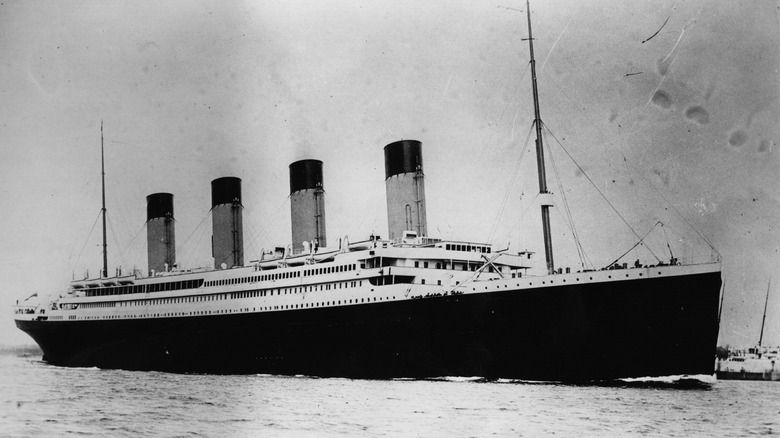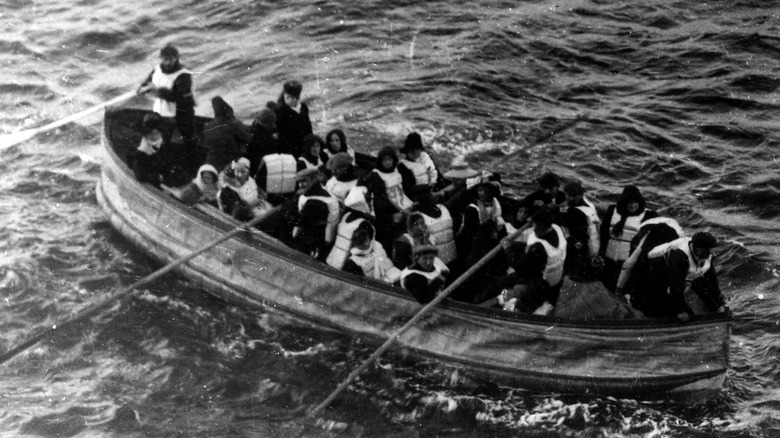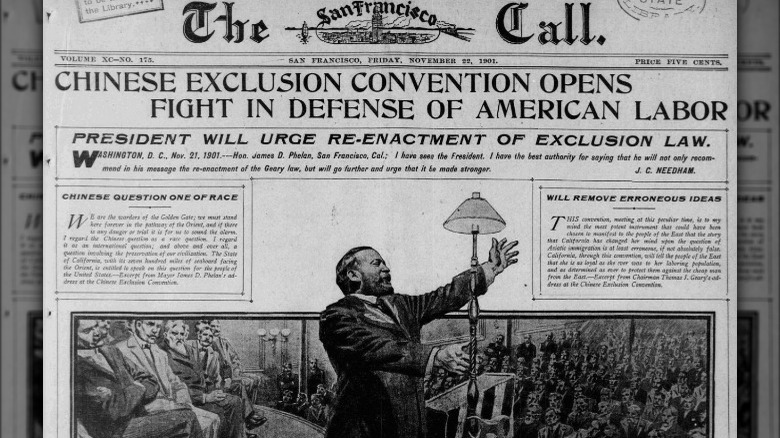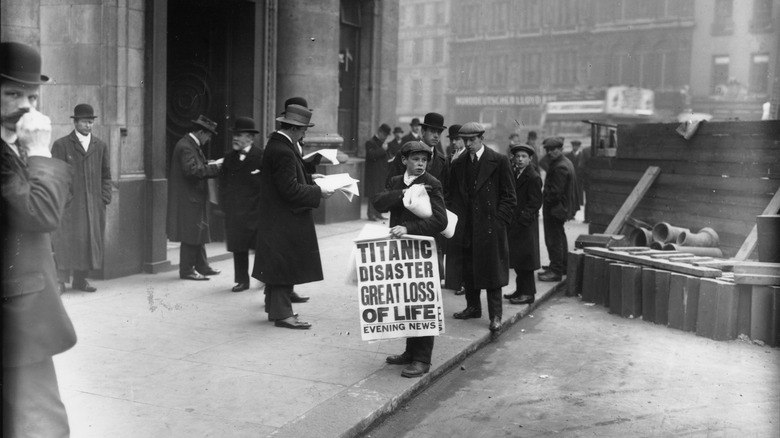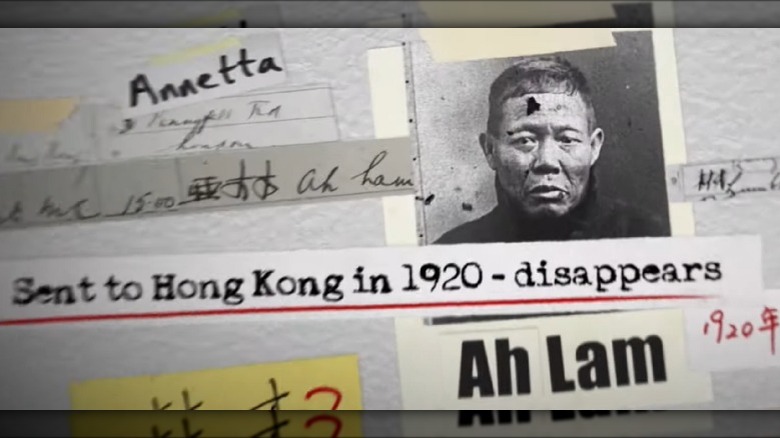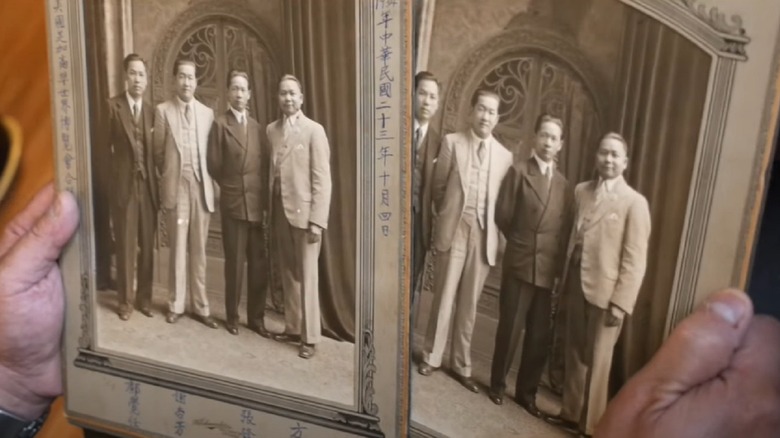The Mystery Of Six Chinese Sailors Aboard The Titanic
The story of the Titanic's sinking has been told plenty of times. There was a staggering amount of lives lost, but there were also hundreds of passengers who lived to tell the tale of how the so-called unsinkable ship met its end during its maiden voyage in 1912. As reported by Reader's Digest, among those who survived include philanthropist Molly Brown; Violet Jessop, who survived three ship disasters in her lifetime; Elsie Bowerman, a women's suffrage advocate; and businessman J. Bruce Ismay, the Titanic's owner, who was often described by the press as a coward.
What you've most likely never heard of is the story of six Chinese passengers who survived the tragedy, only to be turned away from New York. Throughout the years, there were rare mentions of Chinese survivors, but just like the others, the stories of these men deserve to be told.
Who were the Chinese passengers?
On April 10, 1912, the Titanic left the port city of Southampton in southern England for its maiden voyage. The ship carried more than 2,200 passengers and was headed to New York. Among those included were eight Chinese sailors, as reported by Encyclopedia Titanica. The sailors had lost their jobs as a result of the coal strike, and they were reassigned to the Annetta, a freighter that was docked in New York at that time. The Chinese passengers were Lee Ling, Lee Bing, Ling Hee, Chang Chip, Cheong Foo, Len Lam, Fang Lang, and Ah Lam (via Mirror).
When the Titanic collided with an iceberg late evening on April 14, the scene was chaotic. Passengers panicked and struggled to save themselves and their loved ones while the ship slowly descended into the frigid waters. Among the eight Chinese sailors, two drowned, and five escaped the disaster on lifeboats. The last sailor was able to cling onto a floating piece of debris and was rescued by the only lifeboat that turned back to look for survivors among the wreckage.
The Chinese sailors were barred from entering the United States
Titanic survivors were welcomed into the United States. They were provided medical assistance and aid when they arrived. However, the same can't be said for the six Chinese sailors. Instead, they were turned away and immediately sent to the freighter Annetta, which soon set sail to the Caribbean, as reported by The Washington Post.
At that time, the Chinese Exclusion Act was still in place, which prohibited skilled and unskilled Chinese workers from entering the United States. The act was passed in 1882 to placate Americans that detested Chinese laborers, who they claimed were the reason for the decrease in wages and the economic decline (per the National Archives). In the 1880s, more than a hundred communities in the United States pushed the Chinese to leave their neighborhoods. One incident resulted in tragedy when American miners killed more than a dozen Chinese miners in Wyoming, according to The New Yorker. The Chinese Exclusion Act was only repealed in 1943 during World War II. Despite the repeal, the U.S. still set an annual limit of 105 Chinese immigrants to enter the country.
False reports about the Chinese sailors
The discrimination against the Chinese was apparent. For years, reports about the Titanic disaster painted the survivors in a negative light. There were reports of the sailors dressing up as women to make sure they had a place in the lifeboats. Titanic owner J. Bruce Ismay and another survivor named George Rowe — who had been in a lifeboat with some of the Chinese sailors — testified in an inquiry that the Chinese men were stowaways, per Encyclopedia Titanica. The men claimed that they discovered the sailors hidden underneath the seats on the lifeboat.
The Chinese sailors were called cowards, and what they did was deemed by the public as abject behavior. However, researchers have since debunked the false reports. It was discovered that there was no way the Chinese sailors could have hidden underneath the seats of the sailboats, as it was simply not possible. As reported by The World, the Chinese sailors simply took an opportunity that they had and boarded the lifeboat in order to survive — something that all the passengers of the sinking ship attempted to do. There was no proof that they tossed other survivors aside to claim a place on the lifeboat.
What happened to the Chinese survivors?
Not much is known about the lives of the Chinese survivors after they headed to Cuba aboard the Annetta. Per The World, the men were able to push forward with their original plan before the Titanic disaster and worked on Caribbean ships. They were also sent to the United Kingdom during a time when there was a need for sailors. Back then, plenty of British sailors were sent to the frontlines during World War I. One of the Chinese sailors died of pneumonia in 1914.
The other Chinese men were able to move on with their lives. Some married and had children in the U.K. However, they were forced to leave their families behind due to anti-immigration policies, as reported by the BBC. It was yet another devastating blow to the Titanic survivors. Lee Bing moved to Canada, Ah Lam was sent back to his home country of Hong Kong, and Ling Hee went to India. Fang Lang spent time traveling between the U.K. and Hong Kong for several years, but he eventually immigrated to the United States.
The story of the Chinese sailors
In 2020, a documentary titled "The Six" was released. The movie shows the events that transpired when a group of investigators sought to find out what happened to the six Chinese sailors who survived the sinking of the Titanic. Writer Steven Schwankert and filmmaker Arthur Jones worked with a team for years and traveled to different locations to uncover the truth behind what transpired in regard to the Chinese sailors' lives (via Nikkei Asia). Schwankert felt that the stories of the sailors had to be told, just like those of the other survivors of the Titanic.
The project was a big challenge. The filmmakers only had the names of the survivors to start with, and they soon found out that they weren't even real names. However, the investigators persisted, and they were able to discover interesting facts about the men. Producer Luo Tong shared with Mashable that the men faced discrimination throughout their lives, and Schwankert said that goal was to shed light on the lives of the men and correct misconceptions, which they did by uncovering the truth.
